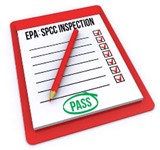Preparing and updating Spill Prevention, Control, and Countermeasure (SPCC) plans are part of GES’ core services. We have performed SPCC-related work at hundreds of facilities across the United States. In this post, we are highlighting the importance of the substantial harm criteria.

Challenge
The client, the Pennsylvania Department of Environmental Protection (PADEP), required an extensive site-wide soil investigation to develop a plan for site remediation to reuse this former landfill and scrap yard property as a public park. Constituents of concern included polychlorinated biphenyls (PCBs); metals, such as arsenic and lead; and petroleum compounds
The Navigable Waters Protection Rule became effective on June 22, 2020. The rule makes substantial changes to the definition of “waters of the United States” (“WOTUS” or “jurisdictional waters”) regulated under the federal Clean Water Act. The most significant change is the removal of ephemeral streams and associated wetlands from federal jurisdiction. Ephemeral streams are streams that only carry water from precipitation and are not in contact with groundwater during a “typical year”. Ephemeral streams typically flow for only a few days after a rain event.
Thirty-five years ago when GES first opened its doors, finding a female engineering student was like looking for a needle in a haystack. While the number of women taking up engineering has substantially increased since then, the percentage of female engineering graduates still pales in comparison to their male counterparts. Currently, women represent a mere 13% of the engineering workforce[i]. As a strong advocate for women in general and in engineering, GES proudly reports that 25% of our engineering staff are women.
Challenge
An oil and gas client required decontamination of 10,295-square-feet of its industrial administrative offices at a natural-gas processing plant after an employee tested positive for COVID-19. The facility was located in a remote area in Wyoming that was experiencing adverse weather conditions of snow and flooding, causing widespread road closures.
Challenge
The client, a land-development company, required an FAA-certified small unmanned aerial system (sUAS or drone) pilot to fly a Matrice 210 drone to visually inspect numerous streams located on the Las Lomas Mitigation Bank from above. The drone would be used to gather data on areas that were inaccessible or too difficult to traverse by foot. Data captured by the drone would be used to create orthomosaic and topographic maps of the streams and their bank conditions, in addition to high-definition photos and videos.
In 1995, GES rolled out our first real-time feasibility-testing platform – the Data Acquisition and Processing Laboratory, or DAPL, as we like to call it. The DAPL embodied GES’ commitment to providing innovative solutions to our clients. At the time, enormous amounts of money were being spent to design, install, and operate remediation systems with little information on the site remediation characteristics.
Challenge
The identification of a trichloroethylene (TCE) plume impacting groundwater in a village within the “Amish Country” of Pennsylvania pressed the need for immediate investigation and action. Residents in this local tourist and commercial hub relied on groundwater as their sole source of potable water.
The Challenge
The client, a large independent petroleum-refining company, sought an environmental firm to provide tank inspection services for their extensive refining facility’s aboveground storage tank (AST) field. As these inspection services would require working at heights, which poses abundant risks to workers, the client proposed the use of small unmanned aircraft systems (sUAS), or drones as an alternative safer and more efficient method for accomplishing the tank roof inspections.
GES’ Margaret Forbes, PhD, EIT, PWS is a Principal Environmental Scientist with over 20 years of experience managing and performing a variety of environmental projects. Margaret is nationally recognized for her expertise in designing wetlands for treatment of wastewater and stormwater, and she is an experienced field ecologist. She is a Rosgen-trained stream designer (Levels I-IV) and has designed several stream systems using natural stream-channel design methods.